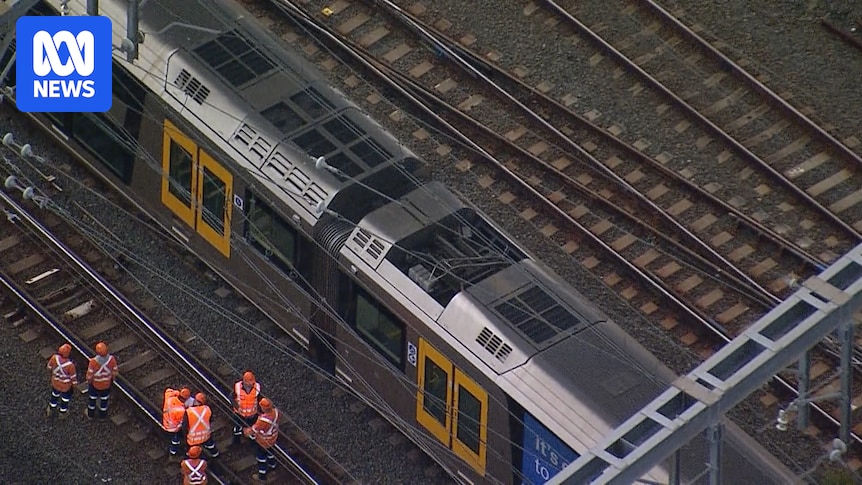
A comprehensive review into the Sydney train network has revealed significant oversight issues after a live electrical cable fell onto a train, causing widespread disruption for over 24 hours. The incident, which occurred in May between Strathfield and Homebush, was traced back to a known risk identified years prior, yet never addressed.
The power connection device on a train collided with overhead wires, resulting in a 1,500-volt electrical cable falling onto the carriage. This critical failure led to the isolation of power across six tracks, impacting hundreds of passengers and causing a network-wide meltdown during peak hours.
Three hundred passengers were evacuated from the affected train, while others on different lines also faced lengthy detrainment processes. The chaos extended into the following morning as repair crews worked to restore the damaged infrastructure, leaving commuters frustrated by reduced service frequencies and inadequate communication.
Historical Oversight and Systemic Failures
The Independent Rail Review, released this week, highlighted that the overhead wire had been flagged as a risk in 2020 but was not entered into Sydney Trains’ defect management system. Transport Minister John Graham acknowledged that earlier testing indicated the wire was below the condemning level, yet no corrective action was taken.
Visual inspections, reliant on binoculars, were deemed insufficient for accurately assessing the condition of such critical infrastructure. The review, commissioned by NSW Premier Chris Minns, criticized the lack of adequate tools and management capabilities to address these issues effectively.
“In this incident, the leadership did not appear to be confident, strong or disciplined,” the review stated. “The teams were not deployed by that leader as we would have expected.”
Communication Breakdown and Recommendations
Another significant concern raised was the poor communication during the incident. Passengers, commuters, and even government officials received limited and unreliable information from Sydney Trains. This communication gap exacerbated the disruption and public dissatisfaction.
The review recommended the adoption of advanced technologies, such as cameras and potentially artificial intelligence, to better monitor and maintain the network. It also suggested reconfiguring the Rail Operation Centre to improve efficiency and reduce tension among staff.
By the Numbers: Punctuality on Sydney trains dropped to 77.1% in May, well below the 92% benchmark.
Government Response and Future Investments
The state government has accepted all 12 recommendations from the review. Transport Minister Graham emphasized the need for a safe and reliable network, acknowledging that current standards are inadequate. He announced a $458.4 million investment over four years to enhance the network’s infrastructure and performance.
Kerry Schott, one of the report’s panellists, expressed satisfaction with the review’s findings being addressed, highlighting the importance of a well-functioning network for over a million daily commuters.
In the aftermath of the incident, Transport for NSW coordinator general Howard Collins described the event as a rare “catastrophic event,” noting the life-threatening potential of the fallen wires. Despite initial assurances, the review has prompted a reevaluation of maintenance practices across the network.
The move represents a significant step towards addressing longstanding issues within Sydney Trains, aiming to restore public confidence and ensure the safety and reliability of the city’s rail services.







